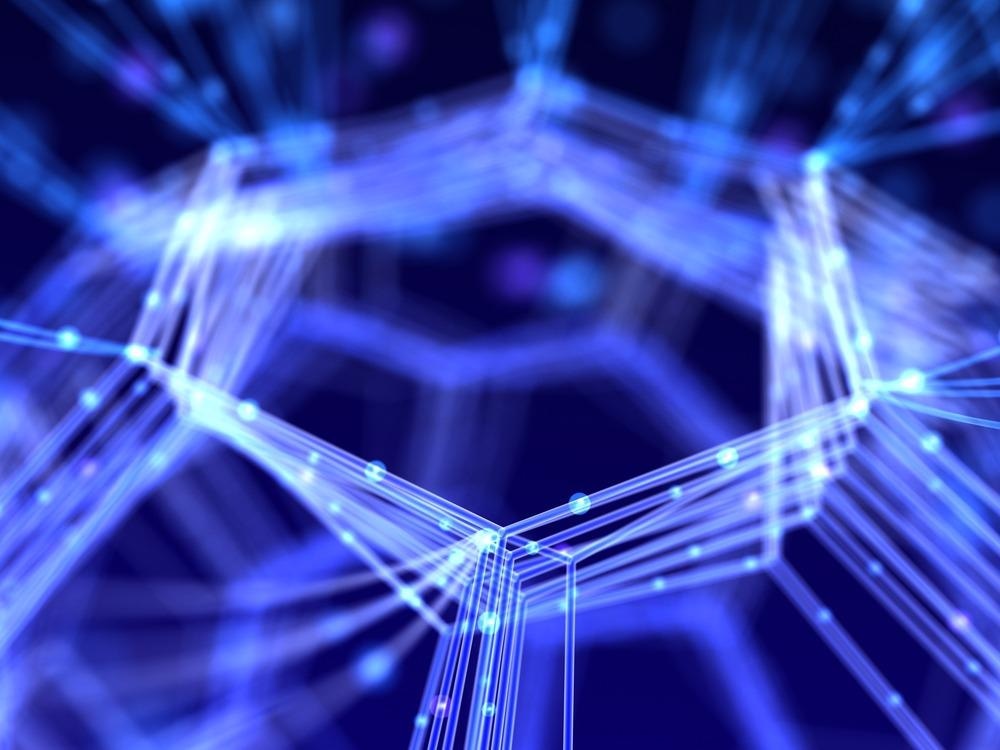An article published in the journal ACS Nano demonstrates the simplistic formation of bimetallic solid-solution TiVC (MXene) and its uses in Surface-Enhanced Raman Scattering (SERS).

Study: Two-Dimensional TiVC Solid-Solution MXene as Surface-Enhanced Raman Scattering Substrate. Image Credit: Inozemtsev Konstantin/Shutterstock.com
Characteristics of SERS
SERS offers a wide range of applications including environmental pollution monitoring, biological and chemical sensing and food safety testing. This is due to its beneficial characteristics such as being nondestructive, ultrasensitive, reliable and convenient detection technology.
In most cases, SERS amplification is due to a blend of chemical mechanisms (CM) and electromagnetism (EM).
The surface plasmon resonance (SPR) effect forms the basis of EM, which is caused by light incidents on a rough metal surface and results in localized electromagnetic field enhancement. On the other hand, CM is obtained as a result of chemical reactions between probe molecules and SERS substrate.
Noble Metal Nanoparticles and Semiconductors Substrates
SERS substrates composed of noble metal nanoparticles demonstrate ultrahigh sensitivity in amplifying the Raman signal of analytes and are likely to become a useful tool for single-molecule recognition. However, noble metal substrates have high production costs, substandard biocompatibility, strong spectral background and low replication issues, all of which limit their use in SERS.
By comparison, semiconductors as SERS substrates are cost-efficient as well as have the benefits of amplified selectivity of target molecules and higher biocompatibility, and are anticipated to be used in the identification and biomolecule sensing.
As a result, additional research is being done on high-performance SERS substrates based on semiconductors in which the CM effect is thought to play a key role in Raman improvement.
However, compared to noble metal substrates, the enhancement factors (EFs) of substrates based on semiconductors are typically very low and are highly inadequate for biological and chemical sensing. Therefore, finding and developing minimal-cost SERS substrates having significantly high EF and sensitivity is critical.
Potential SERS Substrates
Due to their large specific surface area, leveled surface, and significant lack of coordination number of exterior atoms, two-dimensional (2D) materials make it simpler for these atoms to merge with adsorbed molecules to create surface structures, leading to more reliable photoinduced charge transfer (PICT) resonance as compared to three-dimensional (3D) formations.
As a result, 2D substances have a lot of room to grow as SERS substrates. 2D transition metal carbides and/or nitrides (MXenes) also have potential as SERS substrates and have gained significant popularity due to their relatively low price, biocompatibility, SPR, hydrophilicity, high conductivity and tunable electrical properties.
MXene has been intensively examined in recent times not only for its applications such as sensors, biomedicine and electrochemical energy storage but also as a potential SERS substrate, with high detection sensitivity and EF.
The capacity of bimetallic solid-solution MXenes to readily adjust their band patterns and work functionalities by modifying their atomic proportion at the M site has caught the attention of this study since these characteristics are crucial parameters impacting the CM effect.
Since V atoms have a greater number of valence electrons as compared to Ti atoms, therefore, TiVC MXene exhibits an abundance of electron density of states (DOS) around the Fermi level.
In addition, synthesized TiVC has a greater hypothetical conductivity than Ti2C and V2C. Moreover, TiVC with a sufficient work potential, as a SERS substrate, is conductive to charge transfer with analyte particles.
Important Findings
In short, utilizing a one-step chemical etching process, this study investigated the simple fabrication of high crystallite, few-layered solid-solution TiVC MXene nanosheets.
SERS and fluorescence quenching were proven to be achievable with the metallic TiVC sheet. R6G plated on TiVC was found to have a detection limit of femtomolar levels. Additionally, TiVC has a good level of homogeneity and reproducibility for SERS identification of R6G.
The CM phenomenon is the major cause of the considerable Raman increase on TiVC substrate, according to experimental and finite-difference time domain (FDTD) modeling studies.
The extensive density of states (DOS) around the Fermi level of TiVC and the intense contact between the analyte and TiVC, leading to a high electronic transition chance, were related to the analytes supersensitive SERS impact on TiVC.
Moreover, through the vibrational pairing, the powerful analyte TiVC contact produced considerable charge transfer by essentially taking the intensity from the molecular change. In addition, Raman-increased TiVC MXene selectivity was confirmed by sensing additional probe molecules.
Reference
He, Z., Rong, T., et al. (2022). Two-Dimensional TiVC Solid-Solution MXene as Surface-Enhanced Raman Scattering Substrate. ACS Nano. Available at: https://pubs.acs.org/doi/10.1021/acsnano.1c09736
Disclaimer: The views expressed here are those of the author expressed in their private capacity and do not necessarily represent the views of AZoM.com Limited T/A AZoNetwork the owner and operator of this website. This disclaimer forms part of the Terms and conditions of use of this website.